Thomas Eakins, an artist with such talent and prestige that I am shocked to never have heard of him before.
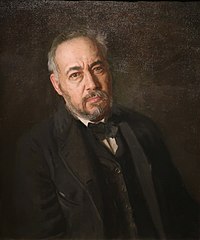
Perhaps it is because he was a realist, a movement that was dominated by the French masters Courbet, Daumier and Millet that he didn’t have a moment to shine. Perhaps it was because his themes were too American, too familiar to stand out among the exciting far off landscapes and eccentric people of Europe. Perhaps because he had some controversial moments with his students and nude models. Nonetheless, Eakins’ should not be overlooked. His work radiates passion and love for his craft with his fine details and precise attention to anatomy.

His art does not feel like a relic of the past; you would not be able to look at his images of sweaty boxing matches in darkened arenas or rowers out on misty waters and guess that they were made in the 19th century. His work is so present, so close to home, so real that it feels you could walk into his paintings and be a part of the action.
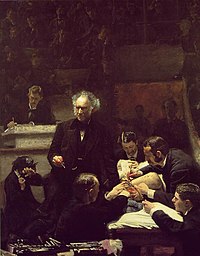
Eakins showed talent from an early age and went about training in Philadelphia before being sent away to Spain to continue his studies. Eakins is special because he went away to the heart of Europe where all the exciting new progressions in art were happening and yet he returned to Pennsylvania after only a short while in Europe and thus remained a very distinctly American artist (though he did bring a sprinkle of the Spanish and European taste for the macabre back home).
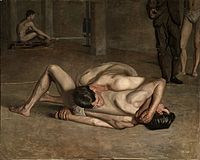
Eakins had a fascination, an obsession with the human figure. He took the Renaissance attitude of accuracy and combined it with his new interest in photography to make beautiful fleshy, real people in portraits and scenes. He was the first American to understand anatomy and perspective to this degree and to embrace the combination of science and art.

I love Eakins work because it is so distinctly American – filled with boxing, baseball and most western of all: cowboys.
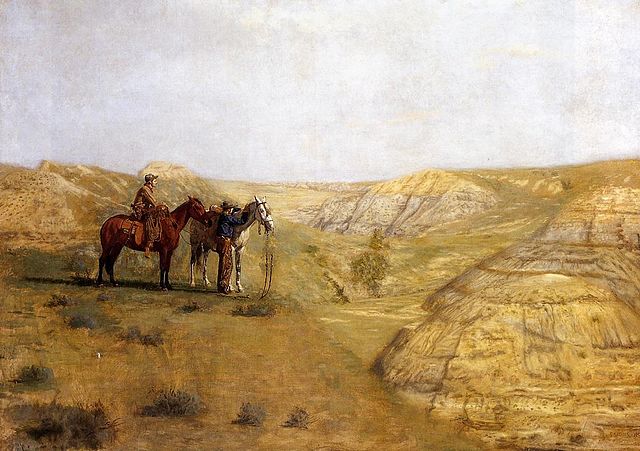
He captured the American psyche with American activities, people and spirit. He painted all types of paintings from portraits (which he is known for capturing the inner personality of the sitter) as well as religious and casual scenes that balance on the border of historical works. He also made serious advancements in the world of photography which he focused on more towards the end of his life. My favourite picture of his is an image of four women dancing – it seems to be scarily similar to Matisse’s “Dance” which was painted in the same year, 1910. I have yet to discover evidence of if they are connected or not, but I am choosing to believe that they are.
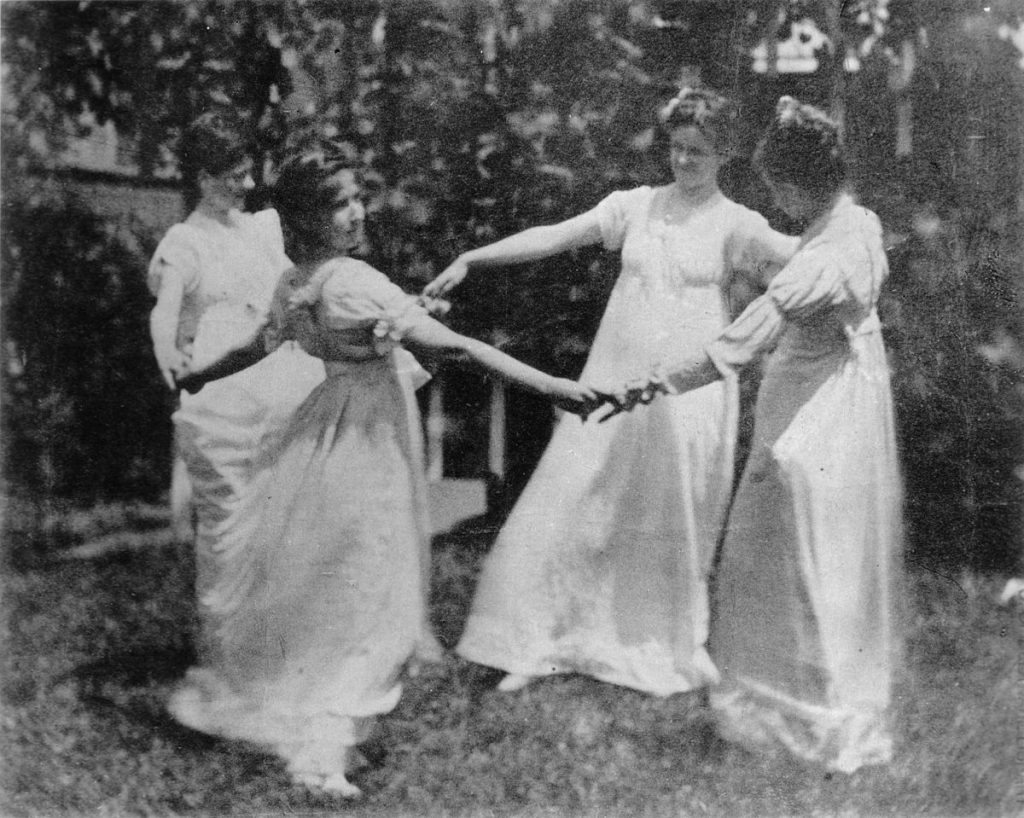
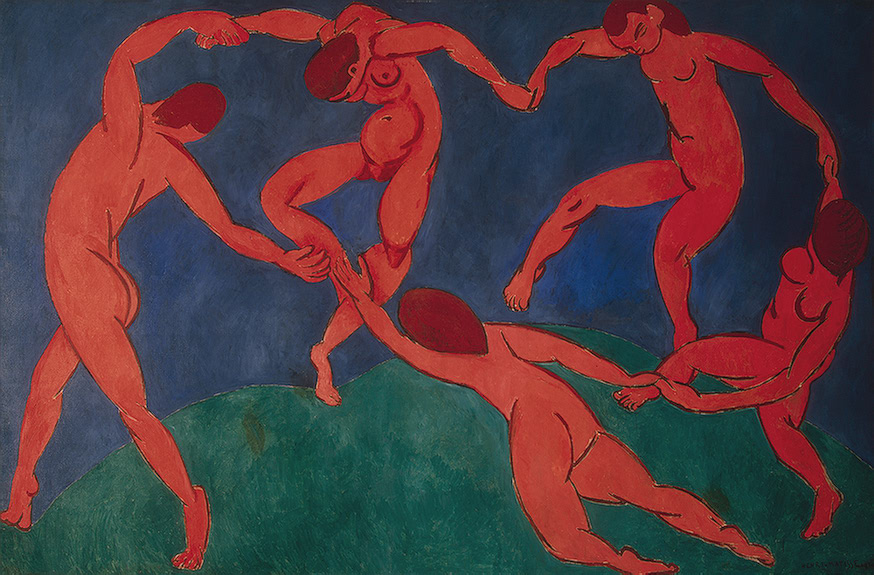
As a rower I really appreciate his scenes of boats out on spring mornings, the gentle sunlight creeping through the mist and the elegant ripples on the water. You can feel the chill of the morning, hear the splashes of oars slicing through water, taste the crisp air; it’s like you’re sitting right next to Eakins as he paints this scene. I don’t know if you can tell, but I think I’m becoming a major Eakins fan.
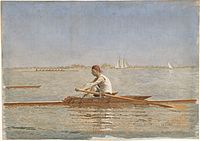
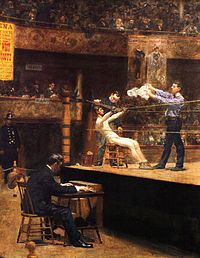
As important as his painting was his devotion to teaching was priority. He taught an entire new generation of American artists – he showed them the importance of the physical human form, how to paint with live models, how to integrate photography into your work. He was a legend at the time but not just for his masterpieces.
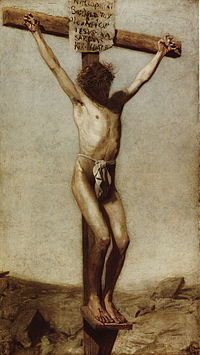
He was known to be controversial as he treated his female students as equals (something quite radical at the time) by letting his co-ed classes observe both male and female nude models. He was critiqued for being too close with his students and exposing the female innocence to the male figure.
With age he developed more painterly, impressionistic strokes which was also frowned upon by the art community – this man was being shot down by society yet still pushed on to create masterpieces. Eakins was ahead of his time and set on embracing beauty of all forms, expanding the knowledge of his students but in the end this would lead to his forced resignation from teaching.

Eakins was an artist fuelled led by scientific accuracy and precision, a teacher who was engaging and involved with his students and an American that reflected his country’s beauty and ideas. He set the bar for American art, he made major progress in the world of motion photography and continues to influence the art world over 100 years later.
Images: https://en.wikipedia.org/wiki/List_of_works_by_Thomas_Eakins
Sources
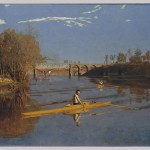
November 17, 2020 at 11:38 pm
Lucy,
Wow most excellent work on Eakins. Your research is stellar and goes well beyond what is expected which I love. Also your personal appreciation on your journey of discovery shines through wonderfully. It comes through loud and clear in your writing which is a pleasure to read. Also I wonder who was influencing who with his experiments in motion photography as Eadweard Muybridge was embarking on his photo experiments with animals and humans in motion around the same time… interesting.
Jeff
December 3, 2020 at 7:37 pm
Lucy,
Excellent presentation on Maynard Dixon! Great slides and delivery. The passion you have for the artist shone through. You also had solid information on the artist combined with deep personal thoughts on the artist. Also loved the cowboy hat. Well Done!
10/10
Jeff